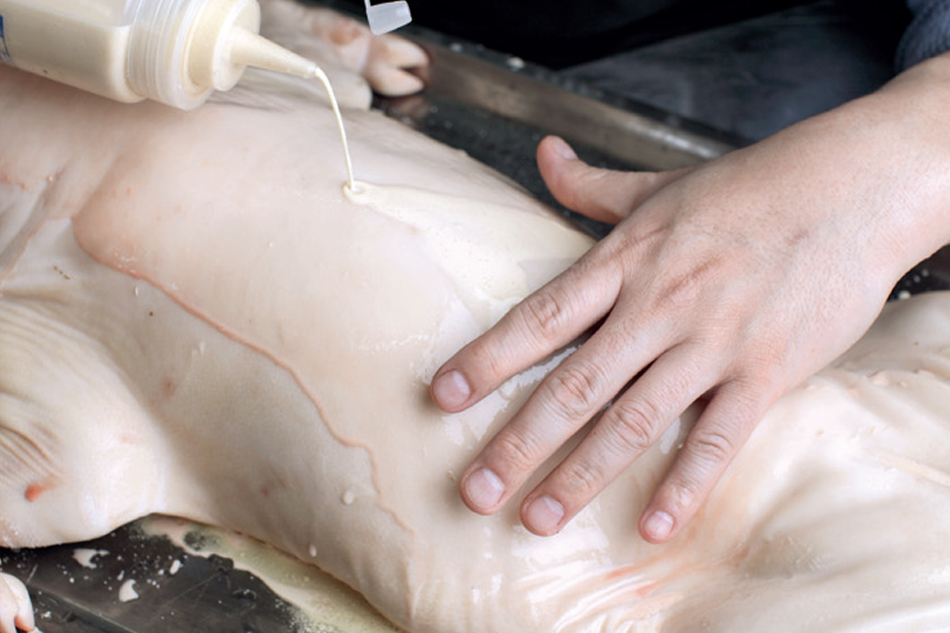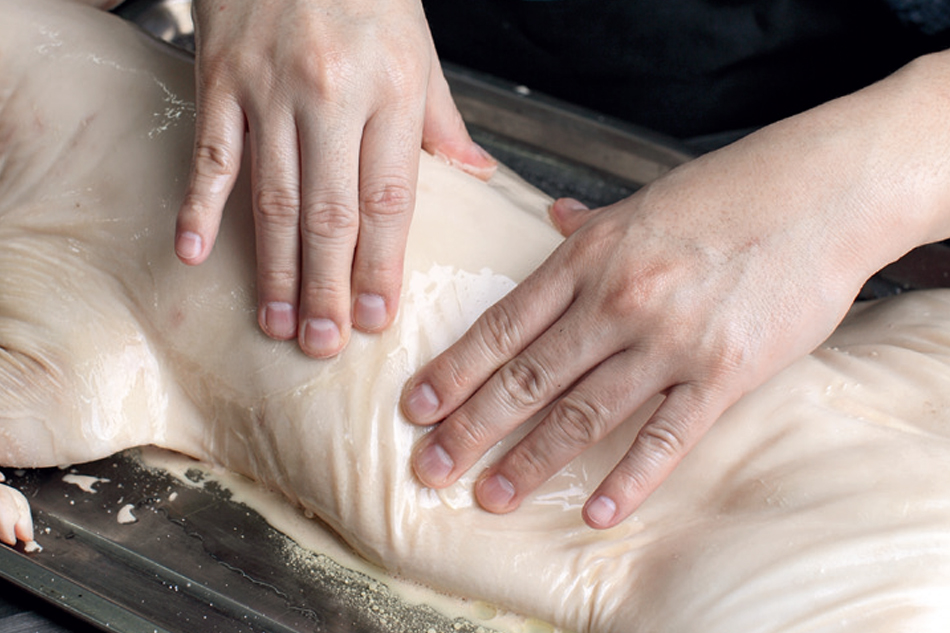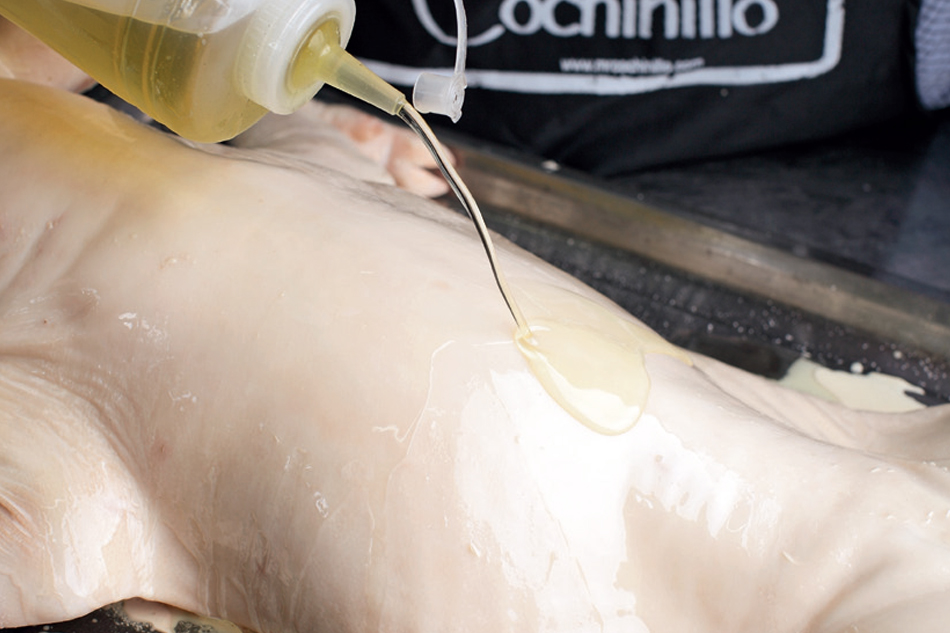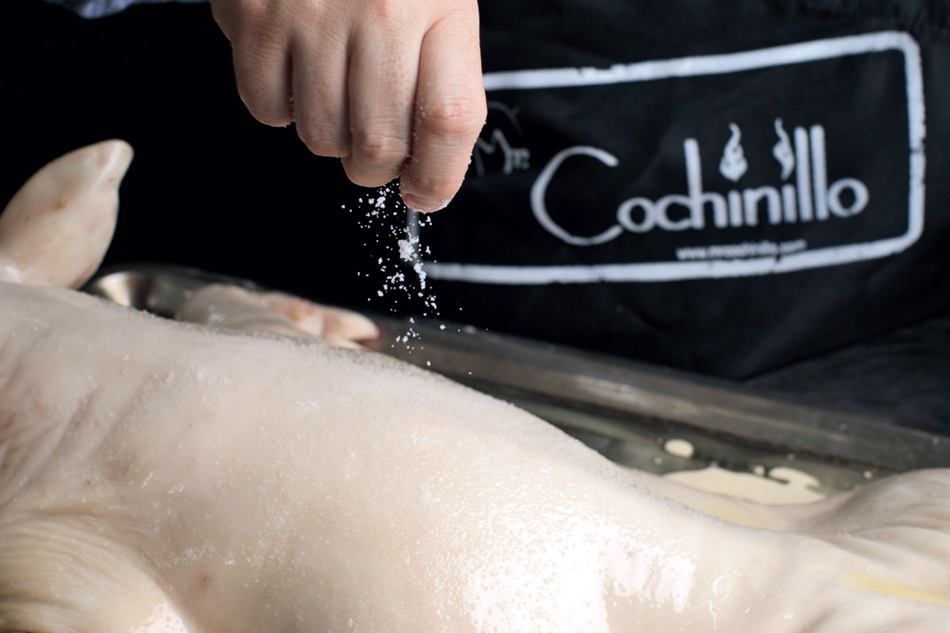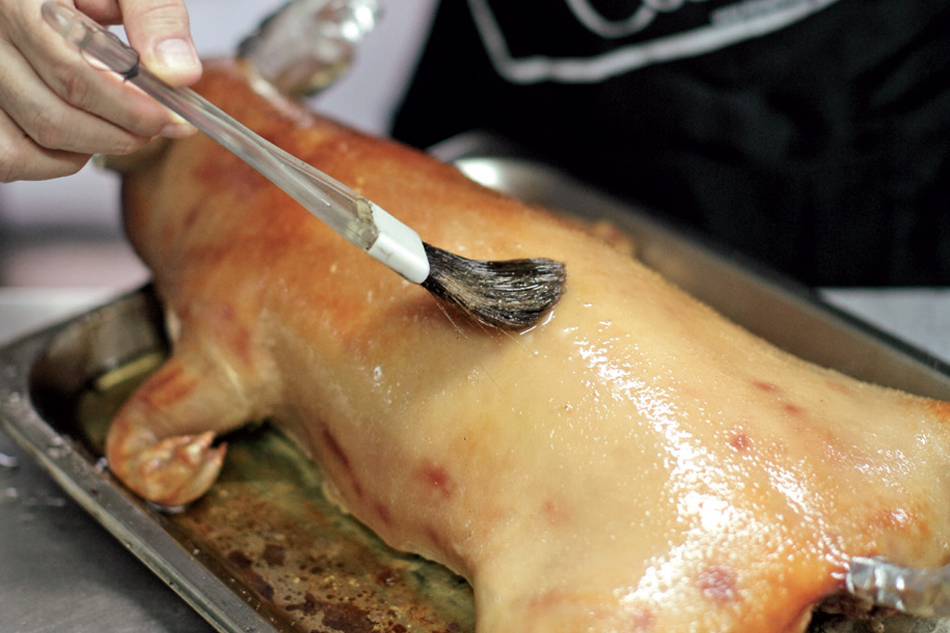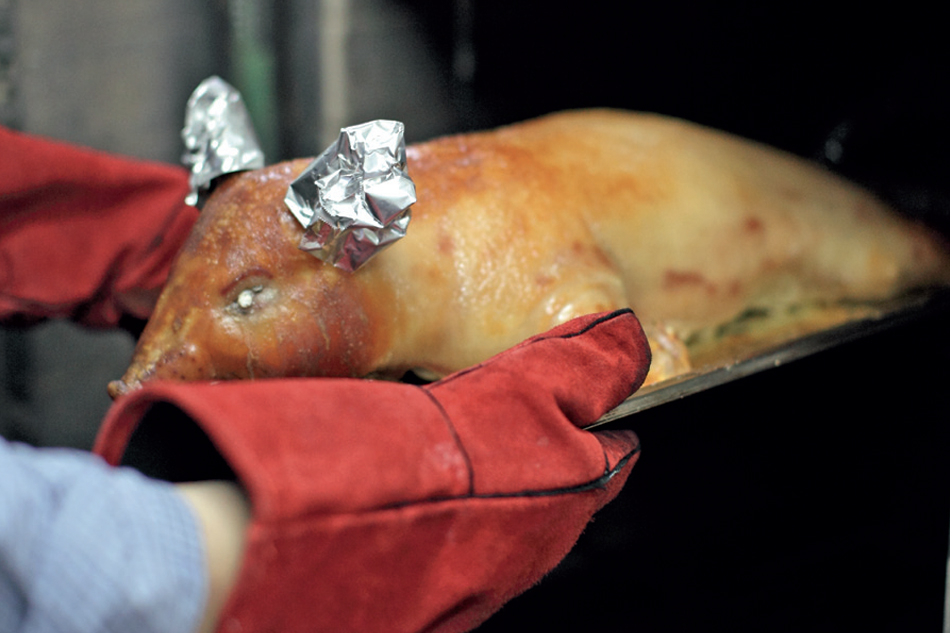Because it's Noche Buena time: how to make your own lechon de leche | ABS-CBN

Welcome, Kapamilya! We use cookies to improve your browsing experience. Continuing to use this site means you agree to our use of cookies. Tell me more!
Because it's Noche Buena time: how to make your own lechon de leche
Because it's Noche Buena time: how to make your own lechon de leche
Angeli De Rivera
Published Dec 23, 2018 10:47 PM PHT
|
Updated Dec 23, 2018 11:00 PM PHT
Lechon is the centerpiece of many grand Filipino celebrations. But, for a twist on an old favorite, cochinillo or lechon de leche—a roast piglet—is something you may want to consider. Because young pigs are used, cochinillo is milkier and juicier. But their balat is no less burnished or crackling when roasted right.
Lechon is the centerpiece of many grand Filipino celebrations. But, for a twist on an old favorite, cochinillo or lechon de leche—a roast piglet—is something you may want to consider. Because young pigs are used, cochinillo is milkier and juicier. But their balat is no less burnished or crackling when roasted right.
Tinee de Guzman, dubbed Mr. Cochinillo, has perfected his formula of roasting cochinillo del cielo, which he cooks in customized brick ovens in his pork shack. Because it's highly seasoned, cochinillo needs no liver sauce. De Guzman's prized piglets have earned him praise, including from TV host Bobby Chin of World Café.
Tinee de Guzman, dubbed Mr. Cochinillo, has perfected his formula of roasting cochinillo del cielo, which he cooks in customized brick ovens in his pork shack. Because it's highly seasoned, cochinillo needs no liver sauce. De Guzman's prized piglets have earned him praise, including from TV host Bobby Chin of World Café.
Click on the image below for slideshow
1. Thoroughly clean piglet, preferrably one that's sourced locally. Scorch excess hair using a burner and trim hooves and the claws.
1. Thoroughly clean piglet, preferrably one that's sourced locally. Scorch excess hair using a burner and trim hooves and the claws.
2. Marinate the pig and store in a freezer to allow the flavor to develop.
2. Marinate the pig and store in a freezer to allow the flavor to develop.
ADVERTISEMENT
3. Before roasting, air dry pig to remove excess liquid. Rub with a mixture of olive oil and salt. Wrap foil around the ears and tail to avoid burning.
3. Before roasting, air dry pig to remove excess liquid. Rub with a mixture of olive oil and salt. Wrap foil around the ears and tail to avoid burning.
4. Baste with olive oil to keep skin crispy at intervals within the 5 to 6 hours it takes to roast the pig.
4. Baste with olive oil to keep skin crispy at intervals within the 5 to 6 hours it takes to roast the pig.
5. Rest the pig for 30 minutes to 1 hour before serving.
5. Rest the pig for 30 minutes to 1 hour before serving.
Notes: For leftovers (if there are any), freeze the meat. Reheat in the oven at 232°C for 20 to 3o minutes. Baste with olive oil to add moisture.
Notes: For leftovers (if there are any), freeze the meat. Reheat in the oven at 232°C for 20 to 3o minutes. Baste with olive oil to add moisture.
Mr. Cochinillo
5 Parakeet St. cor Swallow Drive, Green Meadows Ave, Meycauayan, Bulacan
+632 633 0043, +63 999 881 0810
Order a week in advance. Mr. Cochinillo also offers spanferkel (German roast pig), babi guling (Indonesian roast pig), and fiduea (Spanish seafood pasta).
Photographs by Pat Mateo and Jar Concengco
This story first appeared in Vault Magazine Issue 18 2014.
ADVERTISEMENT
ADVERTISEMENT



